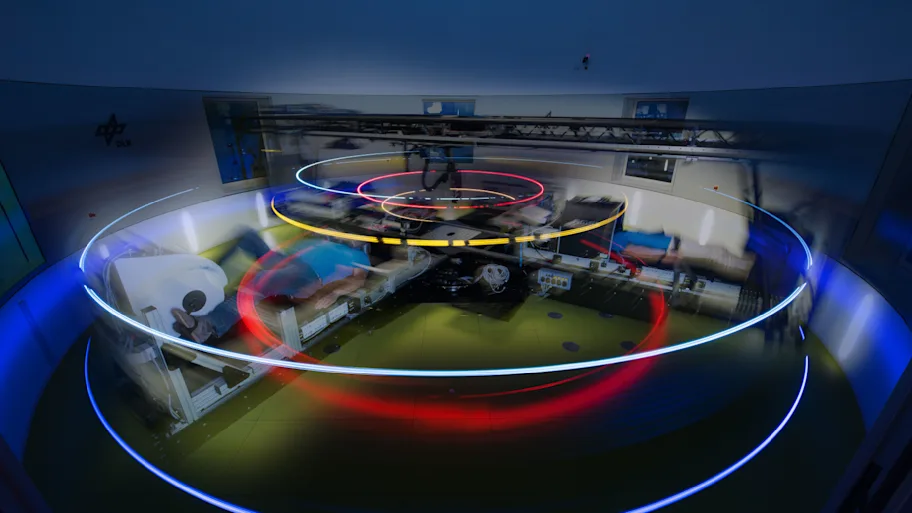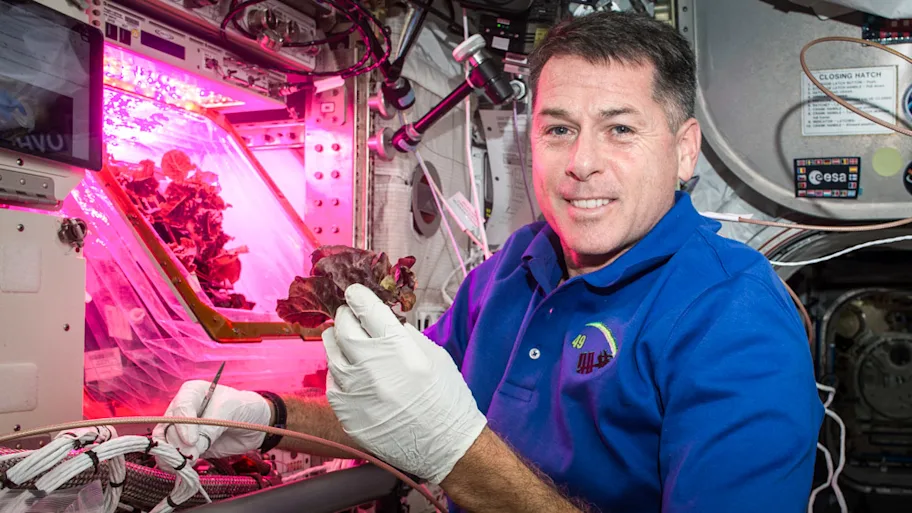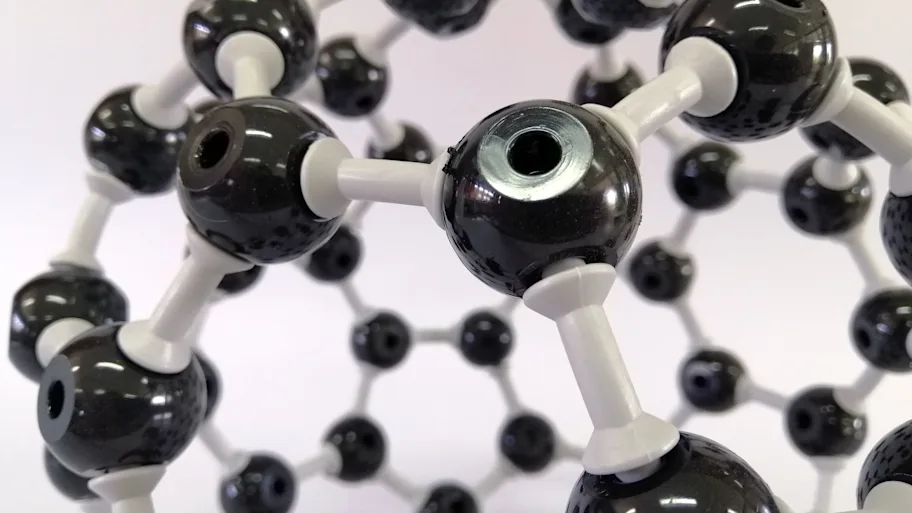
- Science news
- Featured news
- DNA of future deep-space explorers could become more ‘error prone’ in microgravity
DNA of future deep-space explorers could become more ‘error prone’ in microgravity
By Mischa Dijkstra, Frontiers science writer

During parabolic flight to simulate weightless conditions in space, researchers show for the first time that a DNA polymerase enzyme derived from bacteria makes 10-140% more errors while copying DNA in microgravity. Combined with the known greater rate of DNA damage from space radiation, this inaccuracy of DNA replication is likely to pose a threat to the health of future astronauts on long missions.
On 22 May 2019, scientists from Queen's University boarded a modified Falcon 20 aircraft at Ottawa airport. Scheduled was a ‘vomit comet’ flight, where the plane repeatedly climbs to 8km in a steep parabola, alternating with a descent in freefall. During freefall, at a rate of over 3.3km in 20 seconds, only gravity but no lift, thrust, or drag work on the plane, resulting in weightlessness. The scientists’ mission under these difficult conditions was to test whether the enzymes that copy DNA are as accurate under weightlessness as under earthbound conditions. This question is of paramount importance for future space exploration, as the health of astronauts will depend on accurate DNA replication during cell division.
“So-called DNA polymerases are essential enzymes that copy and repair DNA. Inevitably, they aren’t perfect: even under optimal conditions, they sometimes make mistakes. Here we show that DNA polymerases derived from the bacterium E. coli are considerably more prone to errors under microgravity, such as occurs in space. Our results thus have important implications for the health of astronauts,” said corresponding author Aaron Rosenstein, then a student at Queen’s University, Kingston, Canada, and currently at the University of Toronto.
► Read original article► Download original article (pdf)
The results are shown in the open access journal Frontiers in Cell and Developmental Biology.
Mutation rate already higher due to space radiation
Previous research has shown that in space, DNA suffers a higher rate of mutation – for example, substitutions of single nucleotides, crosslinks, inversions, or deletions – due to damage from cosmic rays and solar particles. Unknown until now was whether the natural DNA copying mechanism is also affected by weightless conditions in space. If DNA polymerases become less accurate in space, the already high mutation rate will increase even further as DNA is copied, with cancer as one of the potential consequences for astronauts.
Rosenstein and his supervisor and coauthor, Prof Virginia K. Walker, here show for the first time that the error rate of a DNA polymerase derived from E. coli bacteria is consistently higher under microgravity. To get this result, Rosenstein and fellow team members from Queen’s University participated in the ‘Canadian Reduced Gravity Experimental Design Challenge’. They designed a semi-automatic mini-laboratory to enable a single round of replication of a 1000-nucleotide-long engineered DNA fragment, during the weightless phase of parabolic flight. Their results can be generalized to conditions in space.
Trial and error was needed to make the micro-laboratory amendable to control by motion-sick researchers. “Experiencing microgravity is a unique experience. Performing even simple tasks, such as manually activating our mini-laboratory, can become difficult. We were forced to invest much effort into improving the user-friendliness of our mini-laboratory, to make it easier to operate not only in microgravity, but also in the subsequent 2G hypergravity phase of the flight once a zero-gravity parabola has been completed,” said Rosenstein.
The authors show that the single-base substitution rate – the rate by which the nucleotide thymine (T) is paired with a wrong nucleotide, for example a guanine (G) instead of the correct adenosine (A), on the opposing strand of the DNA helix – was found to be 10% to 140% higher than under earthbound conditions. Similar increased mutation rates were found for all pairwise substitutions between the nucleotides A, C, G, and T, and likewise for haphazard deletions or insertions of one to three nucleotides. As expected, accuracy also depended on whether the DNA polymerase retains a ‘proofreading’ functionality, which verifies (and if necessary removes) any mismatched nucleotides: a version of the enzyme whose proofreading had been inactivated due to mutations had a roughly 50% greater substitution rate.
Inaccuracy of DNA replication poses novel health risk
The researchers conclude that – combined with the greater radition risk in space – the inaccuracy of DNA replication under microgravity could pose risks for the health of astronauts on extended periods in space, such as planned for missions to the Moon and Mars.
“We have shown that DNA polymerases similar to those found in mitochondria – the cell’s powerhouses – make more errors in microgravity. The combined effect of greater damage and decreased replication accuracy could lead to premature aging in astronauts. Our results show the importance of designing rotating spaceships that generate artificial gravity, to prevent these negative effects. We would love to be invited to repeat our experiments on such a ship!,” concluded Walker.
REPUBLISHING GUIDELINES: Open access and sharing research is part of Frontiers’ mission. Unless otherwise noted, you can republish articles posted in the Frontiers news blog — as long as you include a link back to the original research. Selling the articles is not allowed.






